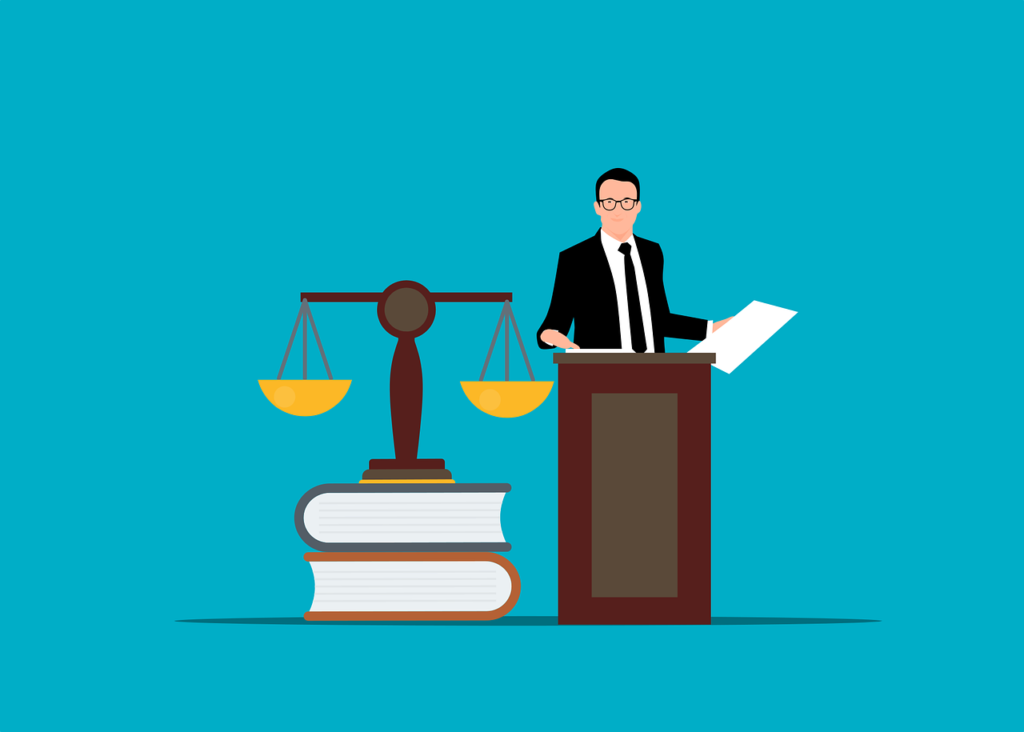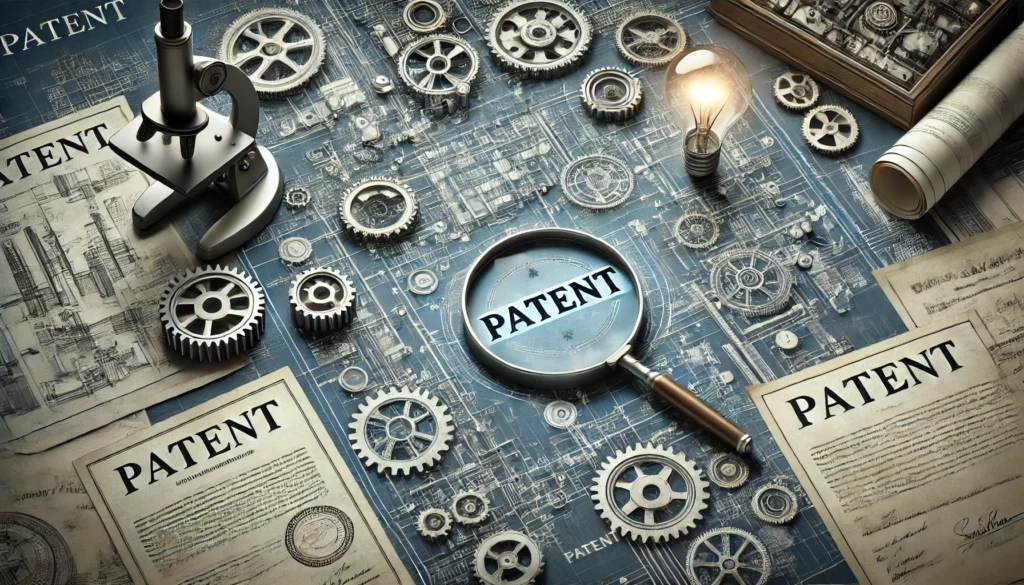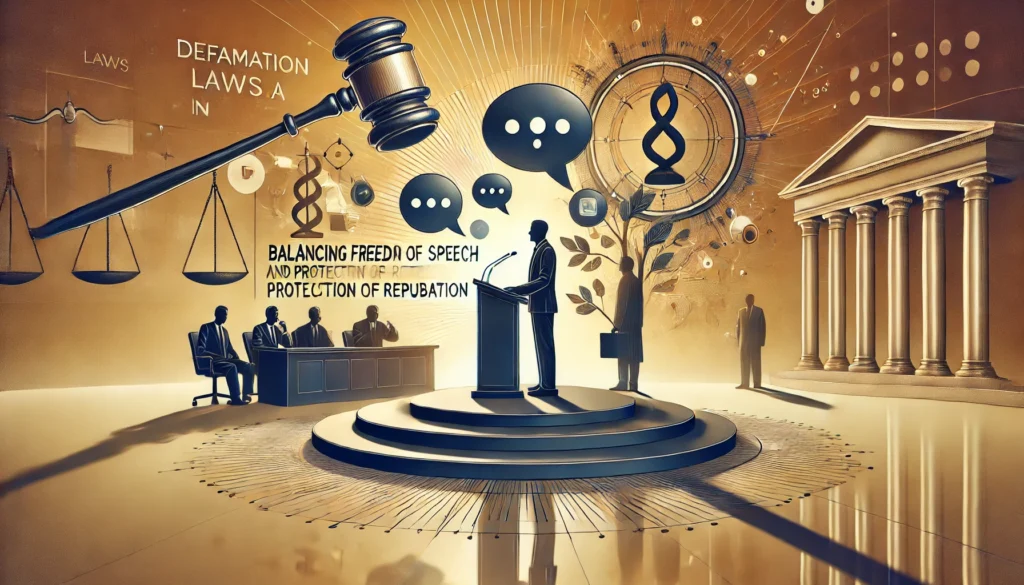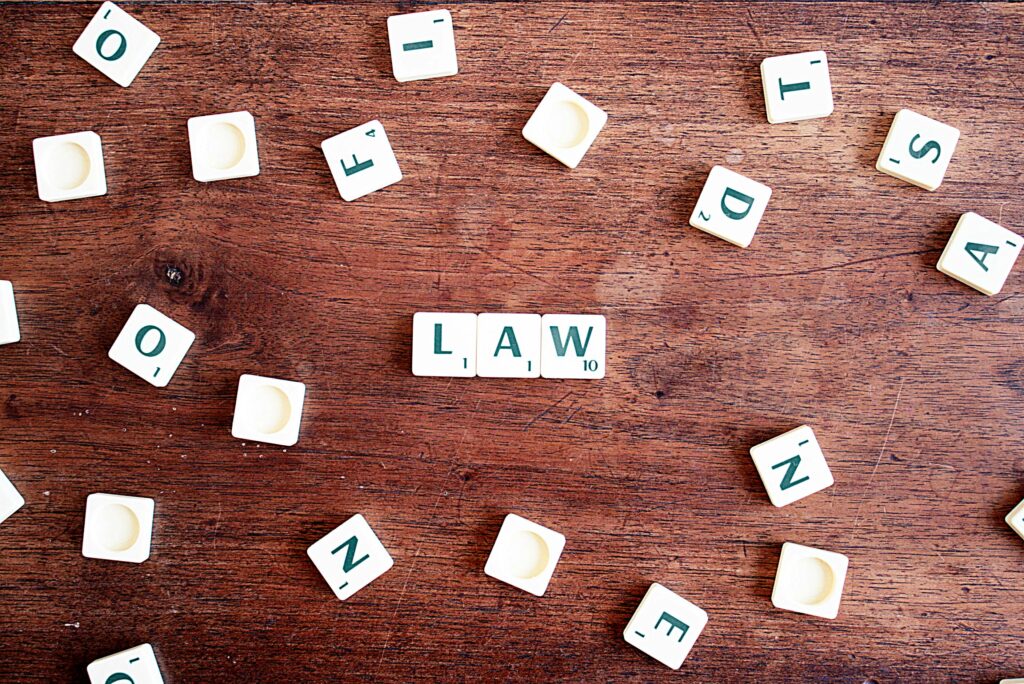Published On: 5th June, 2024

Authored By: Anshula Shreshth
THE ICFAI UNIVERSITY, HYDERABAD
Introduction:
In the different and dynamic geography of India, where artistic pluralism is both a hallmark and a challenge, the issue of hate speech has come decreasingly central to conversations girding media law. detest speech, characterized by communication that offends, threatens, or cuts grounded on attributes similar as religion, estate, gender, or race, raises complex questions about the crossroad of freedom of expression and the imperative to maintain societal harmony. In a country with a robust tradition of free speech, codified in Composition 19 (1) (a) of the Constitution[1], the legal counteraccusations of hate speech within the media sphere demand a nuanced examination.
The absence of a comprehensive description of hate speech in Indian law has given rise to different interpretations, leading to a complex legal geography where adjudication frequently relies on environment, intent, and implicit consequences. This composition seeks to claw into the multifaceted confines of hate speech within the Indian media environment, exploring applicable legal vittles, checking crucial case studies, and addressing the unique challenges associated with regulating hate speech in a different and digitalized society.
Defining Hate Speech in the Indian Context:
India, with its rich shade of societies and communities, faces unique challenges in defining hate speech within its legal frame. The Indian Penal Code (IPC) and other bills give a base for addressing hate speech, but the lack of a specific, comprehensive description has led to varying interpretations. detest speech in India frequently encompasses expressions that incite violence, demarcation, or hostility grounded on factors similar as religion, estate, and race. An illustration of hate speech in the Indian environment might involve a public figure making seditious reflections against a particular religious community during a public address, prompting followers to engage in violence. similar reflections, intended to demean and incite hostility grounded on religious beliefs, contribute to the perpetuation of conceptions and can potentially lead to real- world detriment. The impact of similar hate speech extends beyond the immediate verbal offense, fostering an terrain of fear, demarcation, and division among communities. Addressing similar cases requires a comprehensive approach, encompassing legal measures, public mindfulness, and sweats to promote forbearance and understanding within the different fabric of Indian society[2].
Media Law and Freedom of Expression in India:
Media law in India is innovated on the principles of freedom of expression, an abecedarian right elevated in the Constitution of India. This right is articulated under Composition 19 (1) (a), which guarantees to all citizens the freedom of speech and expression. still, this right isn’t absolute and is subject to reasonable restrictions under Composition 19(2), which allows the state to put limitations on freedom of speech in the interest of public order, decency, morality, and the security of the state.
Article 19(1)(a)[3]: Freedom of Speech and Expression
Article 19(1)(a) of the Indian Constitution reads,” All citizens shall have the right to freedom of speech and expression.” This provision is the bedrock of media freedom in India, fetching the vital part of free speech in a popular society. It encompasses the right to express one’s studies, opinions, and ideas through colorful mediums, including print, electronic, and digital media.
Article 19(2)[4]: Reasonable Restrictions
While Article 19(1)(a) provides for the right to freedom of speech and expression, Article 19(2) delineates the grounds on which reasonable restrictions can be assessed on this right. The state is empowered to legislate laws that put restrictions in the interest of sovereignty and integrity of India, security of the state, friendly relations with foreign countries, public order, decency, morality, disdain of court, vilification, and incitement to an offense
Landmark Cases Shaping Media Law in India:
Romesh Thappar vs. State of Madras (1950)[5]:
This case laid the foundation for interpreting the freedom of speech and expression as encompassing the freedom of the press. The Supreme Court held that the state’s power to put restrictions must be used cautiously to help abuse.
Brij Bhushan vs. The State of Delhi (1950)[6]:
This case emphasized that freedom of the press is not higher than the freedom of an individual and that both are subject to the same restrictions.
Sakal Papers (P) Ltd. vs. Union of India (1962)[7]:
The Supreme Court, in this case, held that restrictions on the volume of newsprint that journals could import and hold were unconstitutional as they violated the freedom of the press.
Indian Express Newspapers (Bombay) (P) Ltd. vs. Union of India (1985)[8]:
In this case, the Supreme Court reiterated the significance of the freedom of the press and emphasized its part as the fourth estate in a popular society
Hate Speech and its Regulation:
The challenge within this legal frame arises prominently in the environment of hate speech. detest speech, defined as communication that offends, threatens, or cuts individualities or groups grounded on attributes like religion, estate, race, or gender, poses a significant dilemma. While freedom of expression is a abecedarian right, the eventuality for hate speech to incite violence, demarcation, and social disharmony necessitates legal intervention. Landmark legal cases have played a pivotal part in shaping the converse around hate speech and media freedom. Cases like Shreya Singhal vs. Union of India (2015), which struck down Section 66A of the Information Technology Act, punctuate the bar’s part in securing freedom of expression in the digital realm.
Legal Implications of Hate Speech in India:
Indian media law addresses hate speech through various legal provisions embedded in the IPC and other statutes. These provisions are designed to curtail specific forms of offensive expression that may lead to societal discord or harm.
Section 153A of the IPC:
Section 153A criminalizes the creation of hostility between different groups on grounds of religion, race, place of birth, hearthstone, language, etc. This provision aims to help conduct that disturb collaborative harmony and has been invoked in cases involving seditious speeches that incite religious abomination.
Section 295A of the IPC:
Section 295A targets deliberate and vicious acts intended to outrage religious passions or any class by affronting its religion or religious beliefs. This provision has been employed to address cases of hate speech that offend religious sentiments, frequently involving media content similar to books, flicks, or online publications.
Section 505 of the IPC:
Section 505 criminalizes statements and rumors circulated with the intent to incite an offense against the state or public tranquility. This provision is invoked when detest speech has the implicit to disturb public order and peace.
Case Studies:
M.F. Hussain Controversy[9]:
The case of M.F. Hussain, a famed artist, serves as a material illustration of the interplay between cultural expression and allegations of hate speech. Several legal complaints were filed against Hussain for his oils depicting Hindu divinities in a manner supposed obnoxious by some groups. While protectors argued that the artwork represented creative freedom, critics viewed it as a deliberate attempt to hurt religious sentiments. This case touched off a public debate on the delicate balance between cultural expression and the need to help religious enmity, emphasizing the nuanced nature of hate speech issues in India.
Hate Speech on Social Media – The Arrest of Kamlesh Tiwari[10]:
In 2015, Hindu Mahasabha leader Kamlesh Tiwari made controversial reflections against a deified figure in Islam, leading to wide commination and calls for legal action. Tiwari was arrested under colorful sections of the IPC for promoting hostility between religious groups. This case underlined the challenges of regulating hate speech on social media platforms, where seditious reflections can fleetly escalate pressures and spread virally.
Akbaruddin Owaisi’s Hate Speech (2012)[11]:
In December 2012, Akbaruddin Owaisi, a Member of the Legislative Assembly( MLA) in the Indian state of Andhra Pradesh, delivered a controversial speech in Adilabad. Owaisi, while addressing a public gathering, made seditious reflections against a particular community, raising enterprises about collaborative harmony. The speech was extensively blamed for its descent content and the eventuality to incite violence. latterly, legal conduct was initiated against Owaisi under colorful sections of the Indian Penal Code( IPC). The case underlined the challenges of balancing free speech and precluding the spread of hate speech, leading to debates on the limits of political rhetoric and its impact on social cohesion. It also stressed the part of legal mechanisms in addressing cases of hate speech within the Indian environment.
Challenges that demand careful consideration and strategic solutions:
Vague Definitions and Ambiguities:
The lack of a precise and universally accepted definition of hate speech in Indian law remains a significant challenge. Ambiguities in legal language can lead to varying interpretations, making it challenging for both law enforcement and the judiciary to consistently apply regulations. A more explicit and nuanced definition is essential to guide legal proceedings and ensure uniformity in addressing hate speech cases.
Social Media Dynamics:
The explosive growth of social media has revolutionized communication, presenting both opportunities and challenges in regulating hate speech. The instantaneous nature of social media allows offensive content to spread rapidly, often reaching a massive audience before countermeasures can be implemented. Regulating hate speech on these platforms requires agile and proactive approaches, including collaboration with social media companies, the development of effective reporting mechanisms, and the swift removal of offensive content.
Political Pressures:
Political considerations often permeate media coverage, influencing the narrative around sensitive issues. Media outlets may face pressures to align with certain ideologies or avoid topics deemed politically sensitive. Negotiating these political pressures while upholding journalistic integrity and preventing the propagation of hate speech is a delicate balancing act. Ensuring that media entities can operate independently and ethically is crucial to creating an environment that discourages the use of media as a tool for spreading hatred[12].
Enforcement Challenges:
The effective enforcement of hate speech regulations poses practical challenges. Law enforcement agencies may lack the resources or training to monitor and address hate speech effectively. Additionally, the sheer volume of content on various media platforms makes it challenging to identify and act upon every instance of hate speech. Strengthening law enforcement capabilities, providing specialized training, and leveraging technology for monitoring and detection can enhance the enforcement of hate speech regulations.
Cultural and Linguistic Nuances:
India’s cultural and linguistic diversity adds complexity to the regulation of hate speech. What might be considered offensive in one linguistic or cultural context may not be perceived similarly in another. Crafting regulations that account for these nuances is essential to avoid unintended restrictions on legitimate expression while still addressing harmful content. Engaging with diverse communities and incorporating their perspectives in the regulatory process can contribute to a more inclusive and culturally sensitive approach.
Lack of Public Awareness:
A significant challenge lies in the lack of awareness among the general public about the consequences of hate speech and the existing legal frameworks. Public education campaigns can play a vital role in informing citizens about the impact of hate speech on social harmony and the legal consequences for those who engage in it. Building awareness fosters a sense of responsibility among individuals and contributes to a culture that values constructive dialogue over inflammatory rhetoric.
International Collaboration:
Given the global nature of the digital landscape, hate speech often transcends national borders. Collaborating with international entities and aligning regulatory approaches can be challenging due to differing legal standards and cultural contexts. However, fostering international cooperation is crucial in addressing hate speech that originates from outside national jurisdictions and ensuring a cohesive response to the challenges posed by the interconnected nature of online communication.
Balancing Freedom of Expression:
Perhaps the most complex challenge is striking the right balance between curbing hate speech and preserving freedom of expression. Overly stringent regulations risk stifling legitimate discourse, dissent, and artistic expression. Crafting regulations that target harmful expressions without unduly infringing on the right to free speech requires a delicate and nuanced approach. Continuous dialogue between policymakers, legal experts, and civil society is necessary to refine regulatory frameworks that strike an optimal balance.
Conclusion:
In conclusion, the issue of hate speech within the Indian media landscape is a complex and multifaceted challenge that demands careful consideration and comprehensive solutions. The absence of a precise legal definition, coupled with the dynamic nature of digital communication, has created an environment where the balance between freedom of expression and the prevention of harm is delicate. Case studies, such as the incidents involving M.F. Hussain, Kamlesh Tiwari, and Akbaruddin Owaisi, highlight the intricacies and the impact of hate speech on social harmony. Addressing hate speech requires a nuanced approach that considers the cultural, linguistic, and social diversity of India. While legal frameworks play a crucial role, they must be complemented by public awareness campaigns, education initiatives, and international collaboration to create a holistic strategy.
Suggestions
In light of the multifaceted challenges posed by hate speech in the Indian media landscape, several key suggestions emerge to foster a more effective and nuanced approach. Firstly, there is an urgent need for the formulation and implementation of a clear and comprehensive legal definition of hate speech that accommodates India’s diverse cultural tapestry. Strengthening law enforcement capabilities, including specialized training and the deployment of advanced technology, is essential to enhance the enforcement of hate speech regulations. Concurrently, public awareness campaigns and educational initiatives must be undertaken to inform citizens about the repercussions of hate speech and to instill a sense of responsibility for fostering a harmonious society. Collaborating with social media platforms is imperative to curb the spread of hate speech online, necessitating the establishment of effective reporting mechanisms and accountability measures for content moderation. It is also crucial to craft regulations that reflect cultural sensitivity, acknowledging the diversity of languages, traditions, and beliefs across India. International cooperation should be encouraged to address hate speech that transcends national borders, allowing for the exchange of best practices and alignment of regulatory approaches. Finally, an ongoing dialogue between policymakers, legal experts, and civil society is essential to strike a balance between preventing harm and preserving freedom of expression, ensuring that regulatory frameworks remain adaptable and contextually relevant to evolving societal norms. Through the adoption of these suggestions, India can forge a more robust and comprehensive strategy to address hate speech and promote a media environment characterized by inclusivity, diversity, and responsible expression.
Reference(s):
[1] Indian Constitution Article 19
[3] Indian Constitution
[4] Indian constitution
[5] 1950 AIR 124, 1950 SCR 594, AIR 1950 SUPREME COURT 124
[6] 1950 AIR 129, 1950 SCR 605, AIR 1950 SUPREME COURT 129, 1963 MADLW 934
[7] 1962 AIR 305, 1962 SCR (3) 842, AIR 1962 SUPREME COURT 305
[8] 1986 AIR 515, 1985 SCR (2) 287, AIR 1986 SUPREME COURT 515, 1985 TAX. L. R. 2451, (1985) CURLJ(CCR) 140, 1985 CRILR(SC&MP) 79, (1985) 2 SCR 287 (SC), 1985 (1) SCC 641, 1985 SCC (TAX) 121, 1985 2 SCR 287, (1985) 4 ECC 111, (1985) 1 COMLJ 115, (1986) 159 ITR 856
[9] M.F. Hussain Controversy 2006
[10] 2015
[11] Akbaruddin Owaisi vs The Govt. Of A.P. Rep. WRIT PETITION No.824 of 2013





